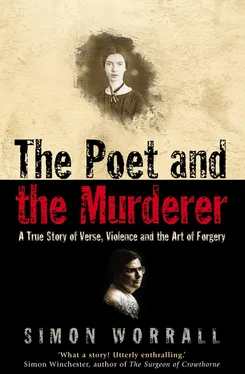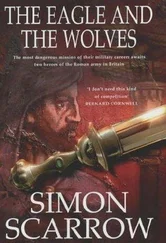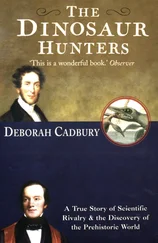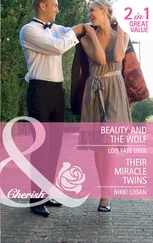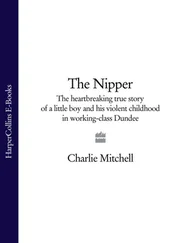Lombardo had just been to the Amherst College Library to collect a book he had ordered about Mark Hofmann: Richard Turley’s Victims , which the Church of Latter-Day Saints had commissioned in the wake of the murder case. As he sat in the sun outside the library, Lombardo began to leaf through the book’s lengthy appendixes. One of them was a list of Hofmann’s non-Mormon forgeries.
In 1986, as part of a plea-bargain arrangement Hofmann made with prosecutors in Salt Lake City, he had agreed to full disclosure about his forgeries: how many there were, how they had been created, to whom they had been sold. This eventually became a six-hundred-page ‘confession’ published by the Salt Lake County Attorney’s office. As usual, Hofmann only told part of the truth. In a second agreement reached with special investigator Michael George, he had then agreed to furnish a complete list of all his Mormon and non-Mormon forgeries.
In 1988 a list was discovered in Hofmann’s prison cell. The first page of this two-page document, which was handwritten in Hofmann’s chicken-scratch script, is headed ‘Mormon and Mormon-Related Autographs.’ It lists a total of sixty-one names, among them most of the founding fathers of the Mormon Church, including Brigham Young and Joseph Smith. A second, alphabetical list, headed ‘Forged Non-Mormon Autographs,’ had the names of twenty-three people, among them some of America’s greatest historical figures, like Abraham Lincoln, George Washington, Paul Revere, and Jack London. Emily Dickinson’s was the sixth name down, between John Brown and Button Gwinnett.
Lombardo’s mouth went as dry as sand. ‘As I looked over the Common it was entering my mind that, if this really was a forgery, I did not think I could be part of this town anymore,’ he recalled. ‘I would not be able to face people, knowing that I had caused all this.’
He had no choice. Two days later, on July 30, this eagerly awaited new work by the town’s most famous daughter came home to Amherst. Several hundred people crammed into the Special Collections section of the library to witness its unveiling. Dickinson scholars who had flown in from Washington or Virginia mingled with local people who had walked across the Common. There were state representatives and local writers, as well as professors from the area’s numerous colleges, like Smith and Vassar. A Dickinson family descendant, Angela Brassley, the great-great-granddaughter of Samuel Fowler Dickinson, the poet’s grandfather, had even flown over from England with her husband and two children. They were photographed standing proudly next to the poem. There were children and flowers everywhere.
Lombardo gave a speech in which he celebrated the numerous coincidences that had enabled the library to buy the poem (some felt that the hand of God had been at work), and thanked all those who had contributed money. He then introduced the actress Belinda West, who had been asked to read the poem. Her reading, he said, would symbolically send Dickinson’s lost words into the world and make a connection with the elusive poet. After the reading a local musician, Sean Vernon, sang an arrangement of the poem that he had created for the acoustic guitar. This was followed by a classical arrangement by New York composer Leo Smit, who had once worked with Aaron Copland. Smit could not attend the event, but he had sent a copy of the score the poem had inspired him to write. ‘It was one of the most beautiful things we have done at the library,’ said Lombardo. ‘It was like people filing through to see the Pietà.’
The analogy is apt. Since the rise of the cult of the artist-as-hero, dating back to the birth of Romanticism at the end of the eighteenth century, literary manuscripts have replaced the relics of the saints as powerful talismanic objects. When James Boswell, the biographer of Samuel Johnson, found himself standing in front of what he believed to be the original manuscript of King Lear , in London, on February 20, 1795 – it was, in fact, a forgery by William Henry Ireland – he knelt down on the floor and kissed it. ‘I shall now die contented,’ he said, ‘since I have lived to see the present day.’
For Dickinson aficionados the discovery of a new poem may not have been quite such an overwhelming experience. But it was nonetheless an epiphanous moment. In the last thirty years a cult has grown up around Dickinson’s work and life, as powerful as the cult that surrounded Shakespeare in Samuel Johnson’s day. Her literary stock has risen so fast that, in the opinion of the celebrated critic Harold Bloom, she is, with Walt Whitman, America’s greatest poet. Her idiosyncratic idiom appeals to postmodern ears. Like Sylvia Plath she is seen as an avatar of female consciousness. Her solitary life echoes with today’s lifestyles. Dickinson was the girl who never grew up. She did not marry or have children. She never entered the messy world of adult sexual relations. In a postmodern, postfeminist world of frayed gender relations, this inner exile is seen as a form of heroism, her decision not to marry the only smart choice.
As a result one of the world’s most private poets has spawned a sprawling, global community of devotees. There are more than 67,000 entries in a dozen languages on the Internet, including a hypertext poetry room, where you can see her poems as they appeared in the fascicles and a virtual reality tour of the Homestead. There are chat rooms where you can discuss your favorite poems. There are lesbian Web sites where you can read the steamy verses it is claimed she wrote to her sister-in-law, Sue Dickinson. You can download her recipes for black cake or gingerbread or purchase a Dor-A-Bil doll, complete with woodblock torso, for $19.95.
The thirty-nine words on this sheet of blue-lined paper brought the guests at the Jones Library as close as it is possible to get to her. This is especially true in the digital age where everything is available, and nothing is special. Whether it is Picasso or pornography, the data flooding across our screens is just that: data. You cannot touch it or feel it. It is gone in a second. An original manuscript, whether it is the piece of paper on which Paul McCartney scribbled down the words to ‘Hey, Jude,’ or a poem by Emily Dickinson, connects us in a visceral way to the past and brings us as close as it is possible to get to the men and women who have changed the world and given voice to the thoughts and emotions we ourselves cannot articulate.
For the people crowding around the poem the idea that Amherst’s most famous daughter had held this piece of paper in her hand, had shaped and formed each letter, then signed it with her name, folded it, and sent it to a child, moved them in a way that no reproduction could match. In an age obsessed with celebrity and lacking in greatness, it was also a token of how high the human spirit could rise. ‘She is like an eleventh-century mystic,’ said Lombardo. ‘And what she has left behind are like the parables of the saints, because they can be universally applied. You feel she is speaking to you very personally.’
While people came over to congratulate him on acquiring the poem, Lombardo had a sickening feeling in his stomach. He had almost called off the gala. As it was, he asked most of his closest friends not to attend. He had told only two people in the room of his suspicions about the poem: the director of the Jones Library, Bonnie Isman, and his wife, Karen. As he listened to speaker after speaker heap praise on him, he imagined the disbelief and shock the people who were now congratulating him would feel, if they knew what he knew. The worst of it was having to put on that smiling face and pretend that this was the most exciting moment of his career, how thrilled he was to have acquired this wonderful treasure for the people of Amherst.
Читать дальше
